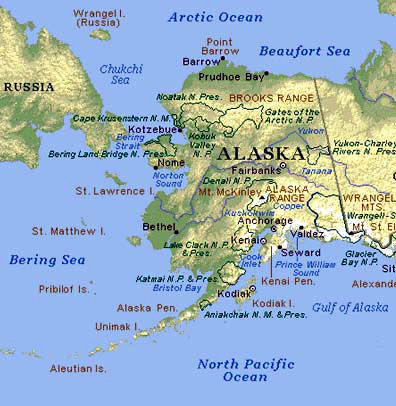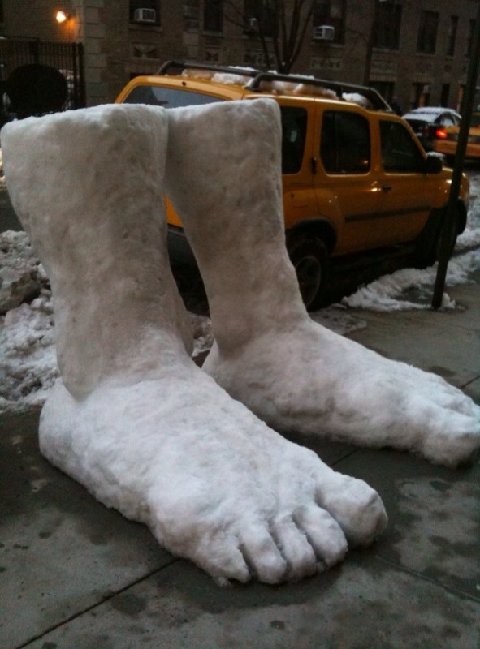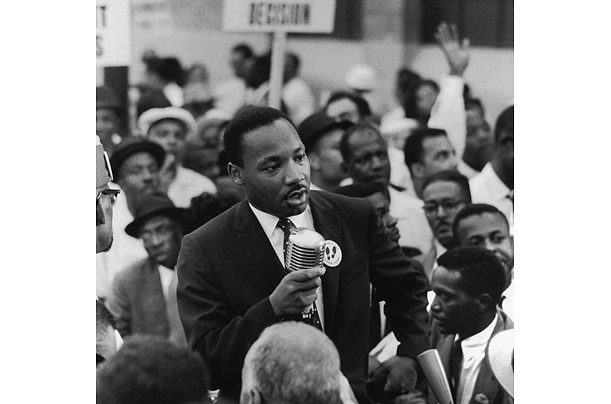
The Oscar statuette
(Image from the Academy of Motion Picture Arts & Sciences)
- They're referred to as statuettes.
- The official name of the award is the Academy Award of Merit, but everybody calls them Oscar.
- Nobody knows for sure where that name came from, but the most popular legend has it that the Academy librarian at the time, Margaret Herrick, said when she first saw it that it looked like her Uncle Oscar.
- Whether that's the true origin of the name or not, by 1934, the name was commonly used in articles about the awards, and by 1939, the Academy adopted it as the official nickname of the award.
- Each Oscar is 13.5 inches tall and weighs 8.5 pounds.
- The statue is of a crusading knight holding his sword so that the point goes down to his feet, and he's standing on a reel of film.
- The film reel has five spokes, one for each of the original five branches of the Academy of Motion Picture Arts and Sciences: actors, directors, producers, technical crew, and writers.
- What a crusading knight has to do with the movies is anyone's guess. The art director for MGM at the time, Cedric Gibbons, is the one who came up with the design as something "suitably majestic."
- They've been awarded each year since 1929, two years after the Academy was founded.
- Over the years, they've been made of different materials:
- 1929: gold plating on the outside, solid bronze on the inside
- During World War II: painted plaster (after the War, recipients were allowed to trade in the plaster ones for gold-plated ones)
- After WWII: reverted to gold plated exterior
- Currently: 24-karat gold plating on the outside, and on the inside is Britannium, which is an alloy of mostly tin, with a little bit of antimony and copper mixed in. It's the Britannium which gives the Oscar its sleek texture.
- R.S. Owens & Company is the company who's made the Oscars since 1982. They're based in on the northwest side of Chicago (Jefferson Park, 5535 North Lynch, to be exact.).
- They also make the Emmys, the MTV Music Video Awards, the Rock & Roll Hall of Fame Awards, the Clio which is for excellence in advertising, and all sorts of other relatively famous awards.
- You could have them make an award specially for you. Like this one, perhaps:

If you want to order this statuette, ask for the Classic Achievement Economy Award. If you only want one, it'll cost you between $70 and $100, depending on how tall you want it to be.
(Image from R.S. Owens)

Maybe someday the Daily Apple could win this award, eh? One of these costs a mere $188.10.
(Image from R.S. Owens)
Every once in a while, you hear about a strange place where some actor or other keeps his or her Oscar. So I thought I'd find out about a few of those for you too.
- Timothy Hutton (Best Supporting Actor, Ordinary People, 1980): His sister thought it would be funny if he put it in the fridge, so he did. Last anyone asked, the Oscar was still in his refrigerator. "It's sitting there, right next to some beers," he said in 2008.
- Jodie Foster (Best Actress, The Accused, 1988; The Silence of the Lambs, 1991): She put hers in the bathroom "because they looked good with the faucets." She had to move them out of there, though, when they started to get corroded on the bottom. Now they're in a trophy case in her den.
- Kate Winslet (Best Actress, The Reader, 2009) also keeps hers in the bathroom. This is so her guests can look at it and pick it up and hold it without the embarrassment of asking.

Kate Winslet: Yay! I won! I'm putting this thing in my bathroom!
(Photo from Fusion Magazine)
- Emma Thompson (Best Actress, Howard's End, 1992) is yet another recipient who keeps hers in the bathroom. "They look far too outré anywhere else." She says they're in there tarnishing "along with everything else, including my body."
- Morgan Freeman (Best Supporting Actor, Million Dollar Baby, 2004) told this story: "When my house was being built in 1988, one of the guys who was doing finishing work said he wanted to construct a trophy cabinet for me. And he put an acrylic sign on the top shelf saying 'No Parking: Oscar Only.' So when I won, I took down the sign and put the Oscar in its place."
- Cuba Gooding, Jr. (Best Supporting Actor, Jerry Maguire, 1996) used to keep his Oscar in his wine cabinet. Because the cabinet was temperature-controlled, the statue "stayed beaming new." Now that he keeps it in his screening room, it's begun to get tarnished.
- Jennifer Hudson (Best Supporting Actress, Dreamgirls, 2007) kept hers for a while in a house she had bought but hadn't had time to furnish. Finally she bought a special pedestal for it and a light that she keeps lit. She lets her guests take pictures of themselves with it, but they are not allowed to touch it.

Jennifer Hudson: Hands off the Oscar, people!
(Photo from Entertainment Weekly)
- Cate Blanchett (Best Supporting Actress, The Aviator, 2005) doesn't keep her Oscar in any one place. It roves around the house "like my family and I do."
- Guillermo Navarro (Best Cinematography, Pan's Labyrinth, 2006) also has moved his Oscar to various places in this house. For a while it was in his kitchen because he was "trying to incorporate it into the family," and then it moved to his room where he keeps it with a group of other awards he won for that movie. After he'd had it for a year, his family had a birthday celebration for his Oscar's first birthday.
- Reese Witherspoon (Best Actress, Walk the Line, 2005) told one source she keeps it in her living room, and told another source that she keeps it in the place where her family puts all of her children's artwork. She said her kids like to play with it and dress it up.

Reese Witherspoon: Thank you so much. My kids are totally going to love playing with this.
(Photo from the People's Daily Online)
- Juliette Binoche (Best Supporting Actress, The English Patient, 1997) said that while winning the Oscar was a dream come true, once she had it, she didn't know where to put it. "I put it in a box with the plates," she said. "I guess I shouldn't do that."
- Danny Boyle (Best Director, Slumdog Millionaire, 2008) keeps his in a shoe bag under his bed. "I used to have it out and get up every day and you just can't look at it. It's like an elephant in the living room, you cannot avoid it."
- Kevin Costner (Best Director and Best Picture, Dances with Wolves, 1990) said, "I used to have my Oscars in my underwear drawer for three or four years." Then he had a screening room built in his house and now he keeps them in that room "on a golden shelf."

Kevin Costner: Heeyyyy! I'm putting these in the drawer with my skivvies!
(Photo from The Spill)
- Barbra Streisand (Best Actress, Funny Girl, 1968; Best Song, A Star is Born, 1977) keeps her Oscars in her barn. That may sound quaint and rustic, but the barn holds only the awards and stuff she's accumulated in the course of her singing career. And it's on her estate in Malibu.
- Anna Paquin (Best Supporting Actress, The Piano, 1993) said that the night she won it, she slept with it next to her bed. But now she keeps it in her closet "next to my boots."
- Susan Sarandon (Best Actress, Dead Man Walking, 1995) kept hers in the guest bathroom, along with all of her other awards. Most recently, though, it was on tour with the Museum of Natural History's exhibit about gold. She said, "I haven't seen it in a few years."
Now I'm going to wonder when I seem them accept those Oscars, is that another one destined for some bathroom in LA?
Sources
The Academy of Motion Picture Arts & Sciences, The Oscar Statuette
Fox News, "What's an Oscar Statuette Really Made Of?" February 20, 2009
Jennifer Roche, About.com, RS Owens & Company - Manufacturers of the Oscar
Boy Abunda, "Where do Oscar winners store their trophies?" The Philippine Star (reprinted from The Hollywood Reporter)
Oliver O'Neal, Mid-Day, Where does your Oscar live? March 1, 2009
Victor Balta, comcast.net, As Seen on TV, Hutton Stays Chill About His Oscar, December 5, 2008
Reese Witherspoon sent her assistant to tour Paris sewer with her son, Celebitchy, November 26, 2008
Jennifer Hudson on where she keeps her Oscar, Urban-Hoopla, February 23, 2008
Danny Boyle hides his Oscar under his bed! The Times of India, January 26, 2011
So where does Guillermo Navarro keep his Oscar? Movie Set, October 3, 2008




































